
All categories
Featured selections
Trade Assurance
Buyer Central
Help Center
Get the app
Become a supplier

(77 products available)











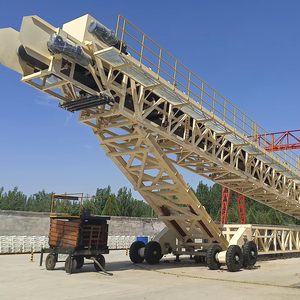





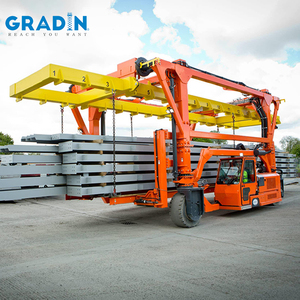
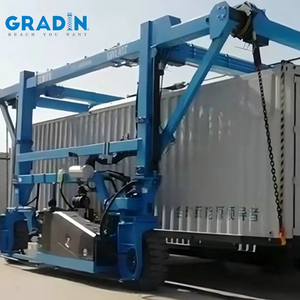






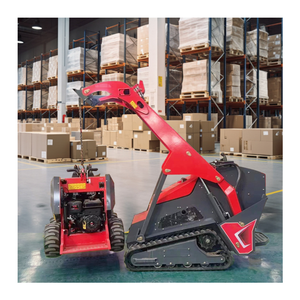
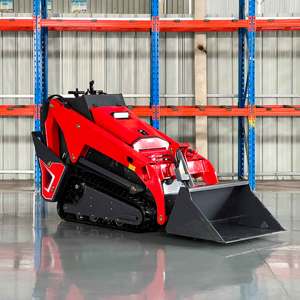













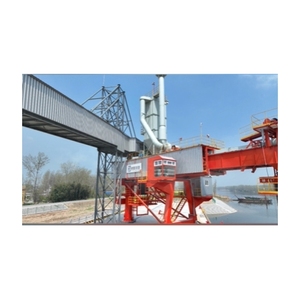

A mobile shiploader is a vital piece of equipment used in ports and terminals for loading bulk materials onto ships. Its design and functionality significantly impact the efficiency and safety of maritime cargo operations. Shiploaders come in various types, each tailored to specific loading requirements and cargo types. Here are some common types of mobile shiploaders:
The mobile shiploader has various specifications depending on the type and application. Here are some general ones:
Loading Rate:
Mobile shiploaders have different loading rates. The loading rate is the maximum capacity at which the shiploader can load cargo onto the ship. The loading rate is measured in tons per hour (TPH). Mobile shiploaders with higher loading rates are suitable for applications where loading needs to be done quickly, such as coal loading or grain loading. A typical loading rate for a mobile shiploader is between 500 to 2000 tons per hour.
Outreach:
Mobile shiploaders have different outreach specifications. Outreach refers to the maximum distance the shiploader can extend beyond the quayside to load ships. A shiploader with a larger outreach can accommodate larger vessels or allow for more flexibility in ship positioning. The outreach is typically between 30 to 60 meters.
Power Supply:
Mobile shiploaders are powered by different power supply systems. Some shiploaders are powered by diesel engines, while others use electric motors. Shiploaders powered by diesel engines offer more mobility and flexibility, as they do not rely on external power sources. However, those powered by electric motors are suitable for applications that require higher loading rates and lower emissions.
Hopper Size:
Mobile shiploaders come in different hopper sizes. The hopper is the cargo collection and transfer point to the ship. The size of the hopper affects the loading efficiency, as larger hoppers can hold more cargo and reduce loading times. The hopper size varies based on the specific application and loading requirements. Typical hopper sizes range from 20 to 100 cubic meters or more.
Here are some general maintenance requirements for mobile shiploaders:
Regular Inspection:
Mobile shiploader operators and maintainers should conduct regular inspections of the equipment. The inspections help identify any potential issues or wear and tear that need to be addressed. The inspections should cover all components, including the loading arms, drives, structures, and electrical systems.
Lubrication:
The mobile shiploader's moving parts should be regularly lubricated to minimize friction and prevent wear. The right lubricant should be used as per the shiploader's manufacturer's guidelines. The lubricating points should be accessed regularly to ensure smooth operation and reduce maintenance costs.
Hydraulic System Maintenance:
The mobile shiploader's hydraulic system should be inspected and maintained regularly. The hydraulic oil levels should be checked and changed as recommended by the manufacturer. The hydraulic filters should also be inspected and replaced to ensure optimal performance.
Electrical System Maintenance:
The mobile shiploader's electrical system should be inspected regularly to ensure all components are functioning properly. The electrical connections should be checked for any signs of wear or damage and repaired or replaced as needed. The electrical system's components, such as motors and controllers, should also be inspected to ensure they are operating within the specified parameters.
Structural Inspection:
The mobile shiploader's structure should be inspected for any signs of wear, corrosion, or damage. The structural components, such as beams, frames, and support legs, should be checked for any signs of deformation or cracking. Any issues should be addressed promptly to prevent further damage and ensure the shiploader's safe operation.
Before purchasing a mobile shiploader, it is important to consider the following factors:
The material to be handled
The type of material to be loaded or unloaded should be considered first. Different materials have different requirements when it comes to loading equipment. For instance, coal, which is in a granular form, can be handled by a shiploader with a belt or a chain conveyor. On the other hand, if the shiploader is going to handle steel products, it should be equipped with specialized loading equipment such as grabs or magnets.
Port infrastructure
The design and capacity of the port where the loading and unloading operations will take place should be considered. Some of the key elements to be considered include water depth, quay length, and berth capacity. These factors will influence the selection of the mobile shiploader's design and its operational capacity.
Shiploader
The type of mobile shiploader to be used should be determined by the type of ships that will be loaded or unloaded. Different ship types are designed to accommodate various loading methods and equipment. For example, bulk carriers are designed for bulk loading and unloading operations, while container ships use containers for cargo transport. The shiploader's design and loading/unloading mechanisms should be compatible with the ship type to ensure efficient and safe operations.
Replacing a mobile harbor crane or shiploader can be a complex task that typically requires specialized knowledge, equipment, and safety considerations. Here's a general overview of the process:
Q1: What is a mobile shiploader?
A1: A mobile shiploader is a loading machine that is used to load bulk materials onto ships. It is called ""mobile"" because it can be moved to different locations and can be driven on the ground or on the rails. The mobile shiploader has its own feeding system, which can include feeders, hoppers, or belt conveyors, to transport the loaded materials. They are commonly used in ports and terminals for efficient bulk material handling.
Q2: What are the advantages of mobile shiploaders?
A2: The mobile shiploader has many advantages, including its mobility, which can be moved to different locations, and its self-contained loading system, which reduces the need for additional equipment and minimizes material loss. It is also versatile and can handle various bulk materials, requires less civil work, and is cost-effective.
Q3: What types of materials can be handled by mobile shiploaders?
A3: Mobile shiploaders are designed to handle a wide range of bulk materials, including coal, grain, fertilizers, minerals, and other bulk commodities. This versatility makes them suitable for various industries and applications, ensuring efficient loading operations for different types of cargo.
Q4: What are the key features of a mobile shiploader?
A4: The key features of mobile shiploaders include their mobility, self-contained loading systems, and their ability to be driven on the ground or on the rails. Other features include precise loading control, adjustable loading rates, and low environmental impact.
Q5: What is the difference between mobile shiploader and other shiploaders?
A5: The difference between mobile shiploaders and other shiploaders is that mobile shiploaders can be moved to different locations. In addition, mobile shiploaders have their own loading systems, which can reduce the need for additional equipment.